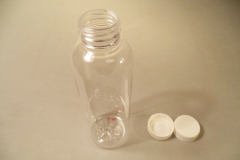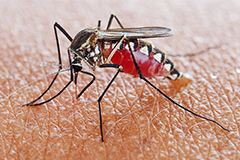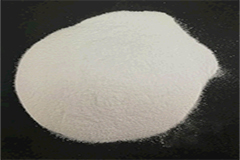| 1. STRUCTURE | |
|---|---|
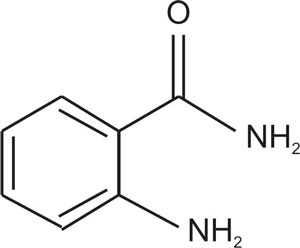 |
| 2. PRODUCT NAME & DETAILS | |
|---|---|
| Product Name | Anthranilamide |
| Product Code | 002776 |
| IUPAC Name | 2-Aminobenzamide |
| CAS No | 88-68-6 |
| HS Code | 2924.29.90 |
| Molecular Formula | C7H8N2O |
| Molecular Wt. | 136.15 |
| Synonyms | 2-aminobenzamide, Anthranilic acid amide |
| 3. REGULATORY INFORMATION
|
|||
| Chemical name
|
Common names and synonyms
|
CAS number
|
EC number
|
| Anthranilamide
|
Anthranilamide
|
88-68-6
|
201-851-2
|
| European Inventory of Existing Commercial Chemical Substances (EINECS)
|
Listed
|
||
| EC Inventory | Listed
|
||
| United States Toxic Substances Control Act (TSCA) Inventory
|
Listed
|
||
| China Catalog of Hazardous chemicals 2015
|
Not Listed
|
||
| Chinese Chemical Inventory of Existing Chemical Substances (China IECSC)
|
Listed
|
||
| Korea Existing Chemicals List (KECL)
|
Listed
|
||
| Canadian Domestic Substance List (DSL)
|
Not Listed
|
||
| Canadian Non-Domestic Substance List (NDSL)
|
Listed
|
||
| Japanese Existing and New Chemical Substances Inventory(ENCS)
|
Listed
|
||
| 4. SPECIFICATION
|
|
| Physical Appearance
|
Off White to Pink Powder
|
| Melting Point
|
110-114 °C
|
| Moisture Content (KF) by Karl Fisher
|
NMT 0.5%
|
| Solubility (2.5% Wt/V in methanol)
|
Clear Solution
|
| T.L.C. Medium Ethylacetate
|
Single Spot
|
| Assay (By Titration Non Aqueous) Potentiometry Titration
|
NLT 98%
|
| 5. APPLICATION
|
|
|
|
| 6. FOOD APPROVAL STATUS
|
- Anthranilamide delivers to the polymer market, known as 2-aminobenzamide, with CAS No. 88-68-6 is suitable for use in PET for water and beverages in the EU.
- According to EU regulation 10/2011 (amended by EU 2019/37 & 2020/1245), the above mentioned product with PM/Ref. No. 348.95 is authorized for use in PET (water and beverages) when the SML of 0.05 mg/kg is respected. |
||
| 7. HAZARD CLASSIFICATION
|
Non-hazardous substance.
|
||
| 8. CAPACITY
|
10 MT per month.
|
||
| 9. STORAGE CONDITION
|
Store in closed container at ambient temperature. Avoid direct sunlight.
|
||
| 10. PACKING DEATILS
|
STD Pack Size : 25 kg Net Wt. Corrugated Boxes
One Pallet Size : 18 Drums x 25 kg Corrugated Boxes = 450 kg Total Quantity in 20' container : 10 Pallets x 450 Kg = 4500 kg Total Quantity in 40' container : 20 Pallets x 450 Kg = 9000 kg |
||
| 11. SHELF LIFE
|
3 years.
|
| Disclaimer |
|---|
| Typical properties should not be considered as specification. Product covered by valid patents are not offered or supplied for commercial use. The Patent position should be verified by the customer. Products will not be supplied to countries where they could be in conflict with existing patents. Products currently covered by valid US patents are offered for R&D use in accordance with 35 USC 271 (e) (I) Above information is given in good faith and without warrenty. |
The above information is given in good faith and is without warranty
Products Recommendations

2-(2-Hydroxy-4-methoxyphenyl)-4,6-Bis(phenyl)-1,3,5-triazine (Appolo-1579 (A-103))
CAS No. 106556-36-9
Automotive Coatings

2-(4-Methoxyphenyl)4,6-bis-(2,4-dihydroxyphenyl) -1,3,5-triazine (Appolo-125 (P))
CAS No. 1440-00-2
Sunscreen Lotion

2-Chloro-4,6-Bis(phenyl)-1,3,5-triazine (Stellar-2015)
CAS No. 3842-55-5
UV Absorber & Light Stablizer additive
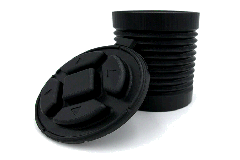
2,4-Bis(2,4-dimethyl phenyl)-6-(2-hydroxy-4-methoxy phenyl)1,3,5-triazine (Appolo-1164 GL)
CAS No. 1820-28-6
UV Absorbers & Light Stabilizer additive

4-(2-Hydrazino-2-oxoethyl)-4-methylmorpholine-4-iumchloride (HMMC)
CAS No. 876-57-3
Pharmaceutical Intermediate
Frequently Asked Questions
What Are the Application & Uses of Anthranilamide?
Anthranilamide is used as an acetaldehyde scavenging agent in Polyethylene terephthalate (PET) blends. Anthranilamide is also used as an intermediate for dyes, pharmaceuticals, agricultural chemicals, perfumes, pigments, flavors and organo luminophores. Contact Us for More Information!
What Is a Unique Numerical Identifier (Cas No) Assigned to Anthranilamide?
The given unique CAS registry number for Anthranilamide is “88-68-6”. This CAS NO is global identification for this chemical anyone wanted to get Anthranilamide for production/research purpose can find it with the help of this number.
What Are Some of the Major Specifications of Anthranilamide?
Anthranilamide is an "Off White to Pink Powder" and has a melting point of 110-114 °C. The Molecular Formula of Anthranilamide is "C7H8N2O" and the Molecular Wt. is 136.15.
What Are the Hazardous Classifications of Anthranilamide?
Anthranilamide Non-hazardous (Corrosive, Irritant) substance.
What Is the Annual Capacity of Anthranilamide?
The annual capacity of Anthranilamide is 10 MT per month.
What Is the Perfect Storage Condition & Shelf Life for Anthranilamide?
The Perfect Storage condition for Anthranilamide is that it should be stored in closed containers at ambient temperature. Avoid direct sunlight and has a shelf life of 3 years.
What Are the International Union of Pure and Applied Chemistry (Iupac) Name of Anthranilamide?
The Give IUPAC name for Anthranilamide is "2-Aminobenzamide".




